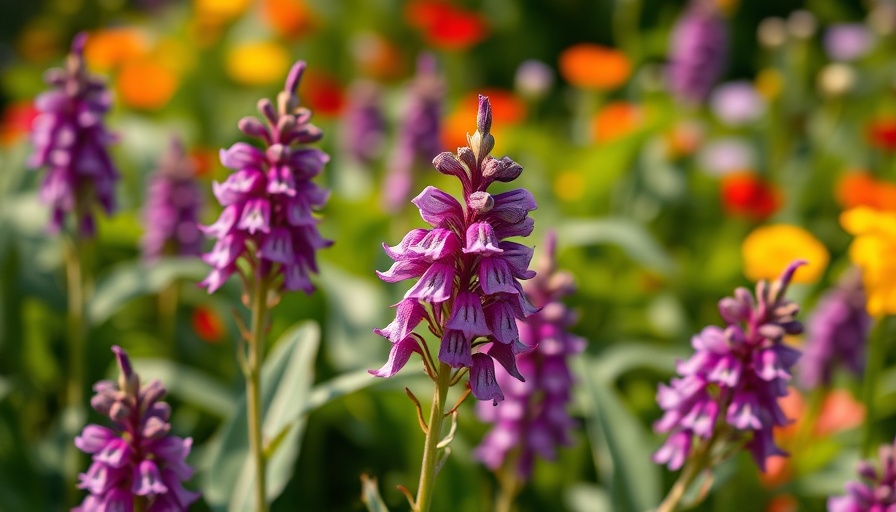
Unveiling the Beauty of Turtlehead Flowers: A Gardener's Dream
If you're looking to add life and color to a wet area of your garden, look no further than the turtlehead flower, known scientifically as Chelone spp. Native to North America, this stunning perennial is rapidly gaining popularity among gardeners for its resilience and beauty. Often overlooked, the turtlehead flourishes in moist, shady conditions and can turn any drab corner into a vibrant display that attracts various pollinators.
Why Gardeners Love Turtleheads
With a remarkable ability to thrive in wet soils ranging from ponds to ditches, turtleheads stand out not just for their unique two-lipped blooms but also for their ecological benefits. These plants are incredibly pest-resistant and have a knack for attracting bees, butterflies, and even hummingbirds—making them a vital addition to any wildlife garden. Beyond aesthetics, turtleheads provide habitat for pollinators and contribute to biodiversity.
Planting Tips for Successful Growth
When it comes to planting turtlehead, it's essential to create an environment reminiscent of its natural habitat. These flowers prefer full sun to part shade and do best in organically rich, moist, well-drained soil with a slightly acidic to neutral pH (between 6.0 and 7.0). If you're planting new seedlings, doing so in spring or early summer will give them ample time to establish themselves before the blooming season arrives in late summer or early fall.
Types of Turtlehead Plants You Can Grow
There are three primary species of turtlehead that gardeners can choose from:
- Chelone glabra: Featuring striking white blooms, this species is well-suited for a bright look in the garden.
- Chelone lyonii: Known for its charming pink flowers, this variety tolerates sunnier conditions better than others.
- Chelone obliqua: This rare species offers pink to red flowers and serves as an essential host plant for butterflies.
Companion Planting for Turtleheads
Turtleheads pair beautifully with other perennial plants that enjoy similar growing conditions. Some excellent companion plants include:
- Toad lilies: These delicate orchids thrive in similar shade and moisture conditions.
- Iris: With their colorful blooms, irises can harmonize well with turtlehead’s unique flower structure.
- Marsh marigolds: Perfect for moist areas, these flowers add cheerful brightness to wet spots.
Maintaining Your Turtlehead Plants
Turtlehead plants require minimal maintenance, but to ensure vibrant blooms season after season, consider these care tips:
- Watering: Keep the soil consistently moist, particularly in the first year, to prevent stress on the plants.
- Pruning: Deadheading spent blooms is unnecessary, as turtlehead self-seeds naturally if left untouched.
- Fertilizing: After their first year, apply a balanced fertilizer each spring to stimulate growth and flowering.
Common Issues and Solutions
Turtlehead plants are relatively resilient, but they can occasionally face challenges such as powdery mildew. To combat this, ensure they have adequate airflow by thinning out dense plants and watering them directly at the roots rather than from above. In cases where plants become floppy, consider staking them up or providing more sunlight.
The Environmental Impact of Growing Turtleheads
By incorporating turtleheads into your garden, you're not only beautifying your space but also supporting local ecosystems. Their blooms provide essential nutrients to pollinators, and being native plants means they are better adapted to the local soil and climate conditions.
Final Thoughts: Get Growing!
Whether you're a seasoned gardener or a novice looking to enhance a waterlogged area, turtlehead flowers are an excellent choice for your next gardening project. Their stunning appearance, pollinator-friendly nature, and low maintenance requirements make them a fantastic addition to any garden landscape.
 Add Row
Add Row  Add
Add 




Write A Comment